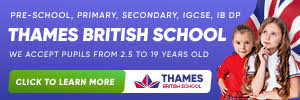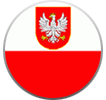On this page:
- List of schools
- The basic principles of the Reggio Emilia method
- Reggio Emilia schools in Poland: learning full of spontaneity and joy
- The role of teachers and parents in Reggio schools
The most frequently mentioned, special feature characterizing this method is the lack of a predetermined curriculum. The method mainly focuses on the child's needs. Young children have an inner need to discover and learn about the surrounding world. The method consists in encouraging children to discover and figure out things for themselves.
Malaguzzi claimed that "a child has one hundred languages," through which he communicates and expresses his needs. These languages are, for example, painting, drawing, or sculpting. Similar to Waldorf schools, so much attention is paid to artistic activities as a means of teaching and learning.
The basic principles of the Reggio Emilia method
The child is born naturally and is full of curiosity about the world around him. Learning should be done by observing and discovering the most important talents of the child. Based on these beliefs, forms of learning adapted to individual predispositions are selected. According to the assumptions of this method, the child learns by acquiring experience.
Everything that’s associated with gaining experience is at the same time something that engenders curiosity. If the child's environment is interesting and has the right structure, it naturally provokes learning and becomes like a second teacher. In the Reggio Emilia learning method, there are a number of unique principles to follow:
- Pick activities related to the current interests of the child.
- Observe the child.
- Inspire the child to learn.
Private schools in Poland that use the Reggio Emilia method are have plenty of extracurricular activities, peer meetings, and parent meetings.These are all considered key features of the child’s development. An example of a joint initiative can be a day spent at school by parents, working with children.
Children and their parents frequently participate in activities together. Such activities are very often transformed into unscheduled initiatives such as joint trips or picnics. Parents' participation in school life is very large in this case and has a positive impact on the child's education.
Reggio Emilia education is multidimensional. The child's guardian and teacher sees this through:
- Observing a child from his perspective. Observation consists in listening to the curiosity of the world that a child has.
- Perception of the child from her perspective. The world seen from the perspective of the child looks completely different from the "adult," while the role of the teacher is to open up these children up to experiences.
- Integration of the child with the environment. The child's environment is one of the most important elements in the education process. An important role of the teacher is to help students understand that each person is an individual, but his actions affect the whole group.
Reggio Emilia schools in Poland: learning full of spontaneity and joy
The Reggio Emilia learning method is not yet well known and rather rare in schools in Poland. Non-public institutions that use it are among the most modern ones (some elements of this method can also be found in public institutions).
Most popular are nurseries and private kindergartens that base their education partly or entirely on the Reggio Emilia method. There are also kindergartens, among them language and international. They can be found in Warsaw, Krakow, Poznań, Gdańsk, Słomniki, and Olsztyn, among other places.
One of the biggest advantages of this method is that it isn’t implemented step-by-step. It’s creating various possibilities for children. These possibilities arise only from the needs of children. However, learning in kindergartens using this method does not take place in an disorganized way.
Kindergarten provides various types of teaching materials, and children are given the freedom to choose how they will use them. The educational materials used are designed to unleash the natural curiosity of the world and develop students' creativity. Children do what they are most interested in, with guidance from the teacher. The curriculum is co-constructed by students and teachers.
Much learning takes place through trial and error experiments and discovery learning. In this way, children naturally develop a process of drawing conclusions themselves. Schools using this method are bright and cozy. They are a place where students feel good, mainly due to the fact that they themselves co-construct their learning environment and curriculum.
The role of teachers and parents in Reggio schools
The role of teachers and parents is not to present ready solutions and answers. The teacher is an observer and makes educational materials available to children. It’s also to support students and motivate them to search for their own answers. Parents' participation in this process is also a very important element. In this way, the young child receives information that what he does is important and interesting.
People who read this also viewed:
- Warsaw private schools
- Kraków private schools
- Poznań private schools
- Wrocław private schools
- Łódź private schools
- Rzeszów private schools
- Gdańsk & Gdynia private schools
-
Advice Guide
- ABC of educational terminology: Glossary of terms and concepts
- The admissions process
- Advantages and disadvantages of studying in an international school
- The application process
- Benefits of Polish private schools
- Bilingual schools
- Boarding schools
- Choosing a private or nonpublic school in Poland
- Compare schools in Poland
- English schools in Warsaw
- Homeschooling
- International schools in Kraków
- International schools
- Private school interviews
- Music education
- Myths about private education
- Non-public schools in Poland
- School open houses
- Our Kids Interview: Get to know EF Academy Oxford
- Our Kids Interview: Get to know Open School
- Our Kids interview: Get to know Regent College International Schools
- Our Kids Interview: Get to know The American School of Warsaw
- Our Kids Interview: Get to know The British School Warsaw
- Our Kids Interview: Get to know Wrocław Cosmopolitan School (two interviews, new video)
- Poland school profiles
- Private day schools
- Gifted schools & programs
- Private Jewish schools in Poland
- Language schools
- Private school tuition and costs in Poland
- Private schools in Poland
- Private schools in Poland offering French-language immersion
- English immersion schools
- Poland school uniforms
- Private special needs schools in Warsaw
- Public versus non-public schools in Poland
- Private school questions
- Private school rankings
- Reasons for choosing private schools - Our Kids’s survey report
- Religious schools
- Schools and classes for children with ADHD in Poland
- Social primary schools
- Social Schools
- Special educational needs (SPE) certificates
- Special needs schools
- Study abroad at a private school
- The first annual non-public school fair in Poland
- The first annual Our Kids non-public school expo in Warsaw was a great success
- Third Private School Expo in Warsaw - summary
- Types of schools
- Types of schools in Warsaw
- Warsaw preschool costs
- Why private school?
- Why parents go private
-
Grades
- Boarding high schools
- Choosing a high school in Poland
- Mokotow High School Campus - a new Warsaw high school and Thames British School campus
- Montessori nursery schools
- Montessori preschools
- Our Kids Interview: Get to know English Montessori School Katowice
- Our Kids Interview: Get to know FSA School
- Our Kids Interview: Get to know KIDS & Co.
- Our Kids Interview: Get to know Polish British Academy of Warsaw
- Our Kids Interview: Get to know The English Playhouse and The English Primary
- Poland education: grade levels
- Preschools in Warsaw
- Private & non-public preschools
- Private & non-public primary schools
- Private bilingual elementary schools in Warsaw
- Private high schools
- Private high schools in Warsaw
- Private middle schools
- Nursery schools
- Private primary schools in Warsaw
- Social high schools
-
Locations
- Boarding schools in Warsaw
- English schools in Kraków
- International Baccalaureate (IB) schools in Warsaw
- International schools in Warsaw
- Montessori schools in Warsaw
- Non-public schools in Warsaw
- Our Kids Interview: Get to know EF Academy
- Our Kids interview: Get to know Excellence in Education better
- Our Kids Interview: Get to know PRIMUS Non-Public Primary School No. 47 and Non-Public Secondary School
- Our Kids Interview: Get to know the Canadian School of Warsaw
- Our Kids Interview: Get to know The Primary and Secondary Schools of the Sisters of Nazareth in Warsaw
- Private Catholic and Christian schools in Warsaw
- Private day schools in Warsaw
- Private language schools in Warsaw
- Private schools in Bialystok
- Bydgoszcz schools
- Częstochowa schools
- Private schools in Gdańsk & Gdynia
- Katowice schools
- Private schools in Krakow
- Lublin schools
- Olsztyn schools
- Private schools in Poznań
- Private schools in Rzeszów
- Szczecin schools
- Private schools Warsaw
- Private schools in Wrocław
- Zielona Góra schools
- Private schools in Łódź








 POL
POL CAN
CAN